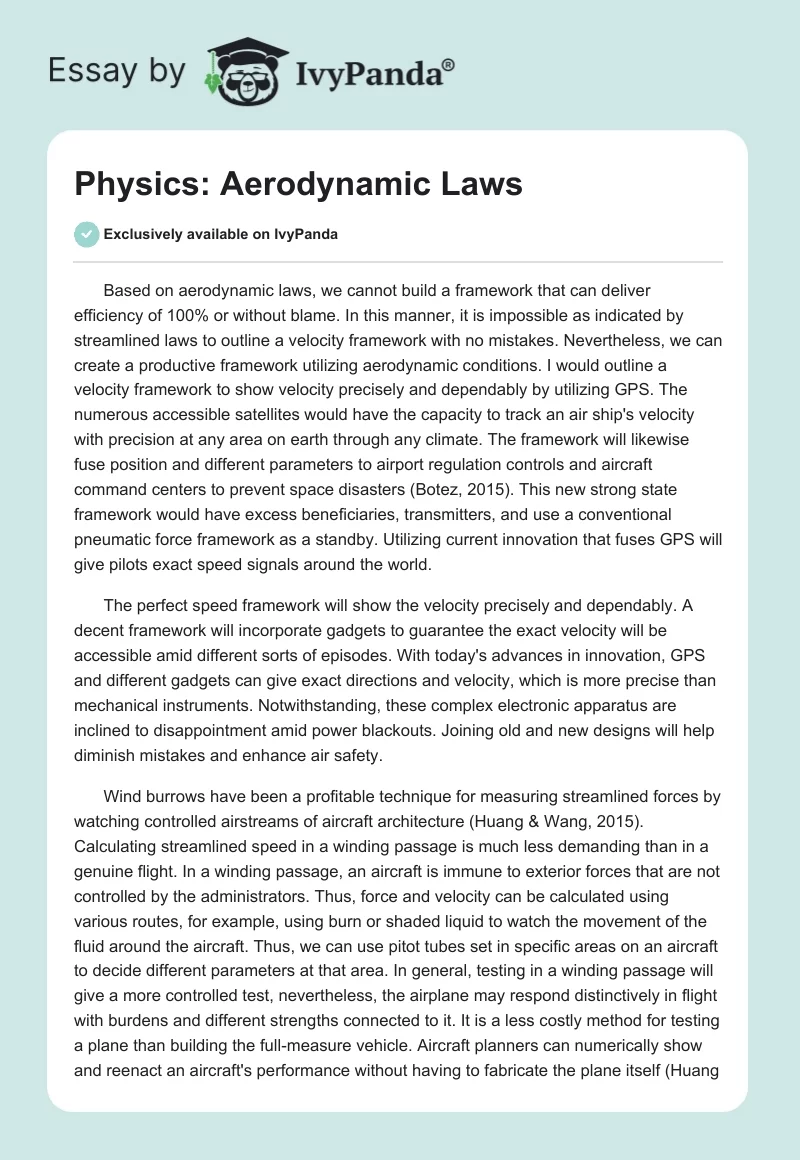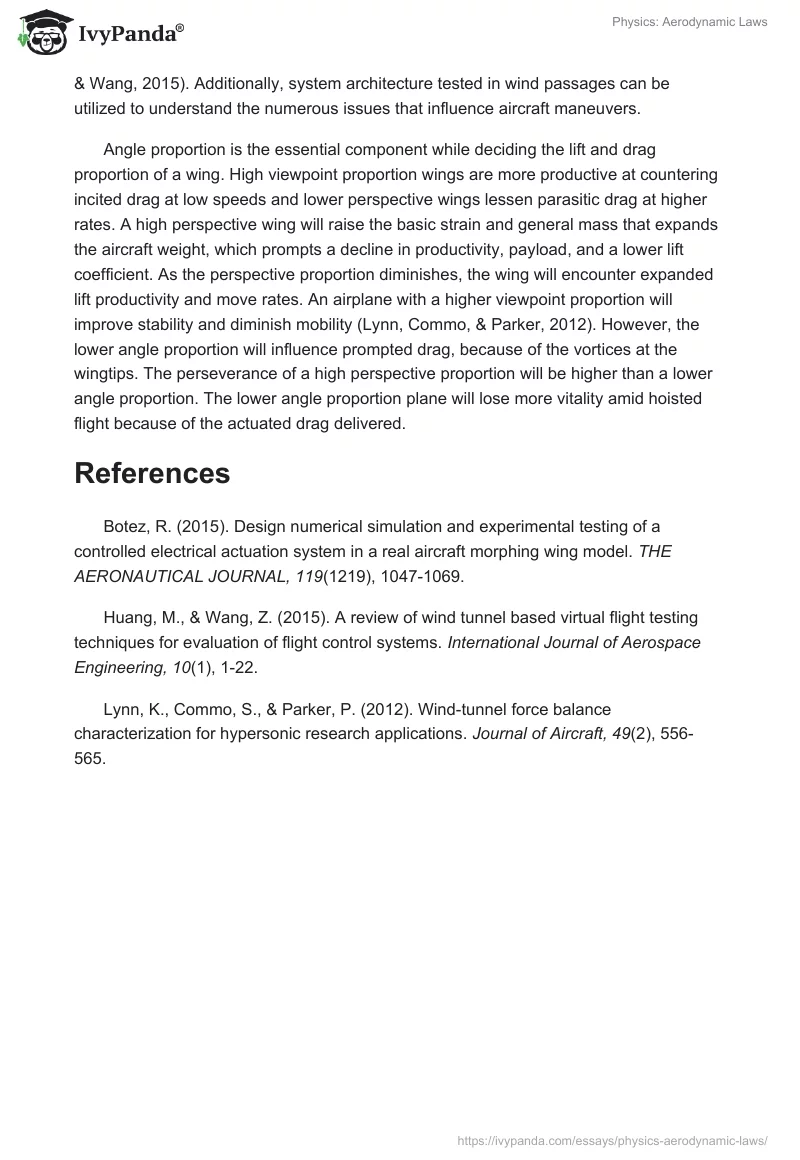Based on aerodynamic laws, we cannot build a framework that can deliver efficiency of 100% or without blame. In this manner, it is impossible as indicated by streamlined laws to outline a velocity framework with no mistakes. Nevertheless, we can create a productive framework utilizing aerodynamic conditions. I would outline a velocity framework to show velocity precisely and dependably by utilizing GPS. The numerous accessible satellites would have the capacity to track an air ship’s velocity with precision at any area on earth through any climate. The framework will likewise fuse position and different parameters to airport regulation controls and aircraft command centers to prevent space disasters (Botez, 2015). This new strong state framework would have excess beneficiaries, transmitters, and use a conventional pneumatic force framework as a standby. Utilizing current innovation that fuses GPS will give pilots exact speed signals around the world.
The perfect speed framework will show the velocity precisely and dependably. A decent framework will incorporate gadgets to guarantee the exact velocity will be accessible amid different sorts of episodes. With today’s advances in innovation, GPS and different gadgets can give exact directions and velocity, which is more precise than mechanical instruments. Notwithstanding, these complex electronic apparatus are inclined to disappointment amid power blackouts. Joining old and new designs will help diminish mistakes and enhance air safety.
Wind burrows have been a profitable technique for measuring streamlined forces by watching controlled airstreams of aircraft architecture (Huang & Wang, 2015). Calculating streamlined speed in a winding passage is much less demanding than in a genuine flight. In a winding passage, an aircraft is immune to exterior forces that are not controlled by the administrators. Thus, force and velocity can be calculated using various routes, for example, using burn or shaded liquid to watch the movement of the fluid around the aircraft. Thus, we can use pitot tubes set in specific areas on an aircraft to decide different parameters at that area. In general, testing in a winding passage will give a more controlled test, nevertheless, the airplane may respond distinctively in flight with burdens and different strengths connected to it. It is a less costly method for testing a plane than building the full-measure vehicle. Aircraft planners can numerically show and reenact an aircraft’s performance without having to fabricate the plane itself (Huang & Wang, 2015). Additionally, system architecture tested in wind passages can be utilized to understand the numerous issues that influence aircraft maneuvers.
Angle proportion is the essential component while deciding the lift and drag proportion of a wing. High viewpoint proportion wings are more productive at countering incited drag at low speeds and lower perspective wings lessen parasitic drag at higher rates. A high perspective wing will raise the basic strain and general mass that expands the aircraft weight, which prompts a decline in productivity, payload, and a lower lift coefficient. As the perspective proportion diminishes, the wing will encounter expanded lift productivity and move rates. An airplane with a higher viewpoint proportion will improve stability and diminish mobility (Lynn, Commo, & Parker, 2012). However, the lower angle proportion will influence prompted drag, because of the vortices at the wingtips. The perseverance of a high perspective proportion will be higher than a lower angle proportion. The lower angle proportion plane will lose more vitality amid hoisted flight because of the actuated drag delivered.
References
Botez, R. (2015). Design numerical simulation and experimental testing of a controlled electrical actuation system in a real aircraft morphing wing model. THE AERONAUTICAL JOURNAL, 119(1219), 1047-1069.
Huang, M., & Wang, Z. (2015). A review of wind tunnel based virtual flight testing techniques for evaluation of flight control systems. International Journal of Aerospace Engineering, 10(1), 1-22.
Lynn, K., Commo, S., & Parker, P. (2012). Wind-tunnel force balance characterization for hypersonic research applications. Journal of Aircraft, 49(2), 556-565.


